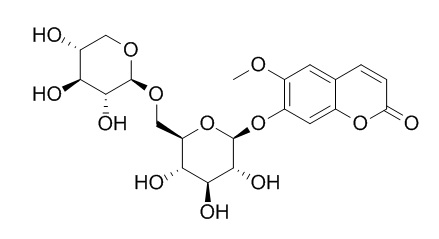Fabiatrin
Inquire / Order:
manager@chemfaces.com
Technical Inquiries:
service@chemfaces.com
Tel:
+86-27-84237783
Fax:
+86-27-84254680
Address:
1 Building, No. 83, CheCheng Rd., Wuhan Economic and Technological Development Zone, Wuhan, Hubei 430056, PRC
Providing storage is as stated on the product vial and the vial is kept tightly sealed, the product can be stored for up to
24 months(2-8C).
Wherever possible, you should prepare and use solutions on the same day. However, if you need to make up stock solutions in advance, we recommend that you store the solution as aliquots in tightly sealed vials at -20C. Generally, these will be useable for up to two weeks. Before use, and prior to opening the vial we recommend that you allow your product to equilibrate to room temperature for at least 1 hour.
Need more advice on solubility, usage and handling? Please email to: service@chemfaces.com
The packaging of the product may have turned upside down during transportation, resulting in the natural compounds adhering to the neck or cap of the vial. take the vial out of its packaging and gently shake to let the compounds fall to the bottom of the vial. for liquid products, centrifuge at 200-500 RPM to gather the liquid at the bottom of the vial. try to avoid loss or contamination during handling.
Journal of Third Military Medical University2019, 41(2):110-115
Mediators Inflamm.2016, 2016:7216912
In Vitro Cellular & Developmental Biology - Plant 2021, 57:874¨C882.
Biomed Chromatogr.2019, 8:e4774
Biomed Pharmacother.2021, 144:112300.
Phytomedicine.2022, 100:154085.
Natural Product Communications2020, doi: 10.1177.
FEBS Lett.2015, 589(1):182-7
Phytochem Anal.2016, 27(5):296-303
Int Immunopharmacol.2020, 90:107268.
Related and Featured Products
Journal of China Pharmaceutical University, 2002 , 33 (4) :271-3.
Chemical study on the root barks of Lycium chinese Mill.[Reference:
WebLink]
To study the chemical constituents of the root barks of \%Lycium chinese\% Mill.
METHODS AND RESULTS:
Various chromatographic techniques were used to separate and purify the constituents.Their structures were elucidated based on the physico chemical properties and spectral data. Five compounds were isolated from the root barks of \%Lycium chinese\% Mill.. and were identified as scopoletin(â… ), physcion(â…¡), emodin(â…¢), scopolin(â…£) and Fabiatrin(â…¤).
CONCLUSIONS:
Except for scopoletin, they were isolated from this plant for the first time.



